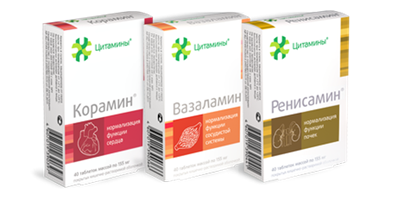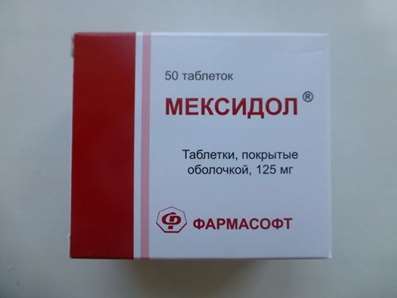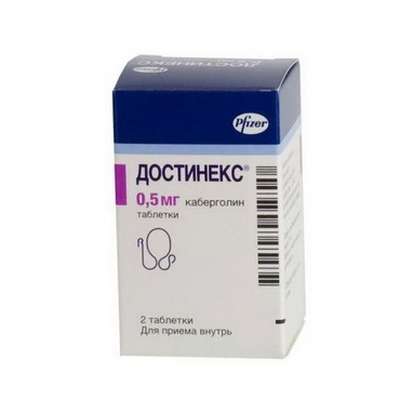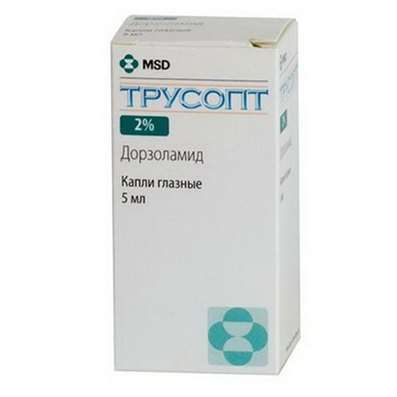Instruction for use: Ziprasidone
I want this, give me price
Latin name of substance Ziprasidone
Ziprasidonum (genus. Ziprasidoni)
Chemical name
5- [2- [4- (1,2-Benzisothiazol-3-yl) -1-piperazinyl] ethyl] -6-chloro-1,3-dihydro-2H-indol-2-one (as hydrochloride)
Gross formula
C21H21ClN4OS
Pharmacological group:
Neuroleptics
CAS code
146939-27-7
Application in pregnancy and lactation
The action category for fetus by FDA is C.
Model clinical-pharmacological article 1
Pharmacotherapy. Antipsychotic agent (antipsychotic). Has a high affinity for dopamine D2 receptors and a much more pronounced affinity for serotonin 5-HT2A receptors; also interacts with serotonin 5-HT2C, 5-HT1A and 5-HT1D receptors. Has a moderate affinity for the neuronal carriers of serotonin and norepinephrine, as well as for H1-histamine and alpha-1-adrenoreceptors (which is associated with the development of drowsiness and orthostatic hypotension). Virtually does not interact with m-holinoretseptorami. Antipsychotic activity of the drug is partly due to blockade of dopaminergic and serotonin receptors. Serotonergic activity of ziprasidone and its effect on the reuptake of neurotransmitters in neurons are associated with antidepressant activity. The blockade of 5-HT1A receptors causes anxiolytic effects. A powerful antagonism to 5-HT2C receptors determines antipsychotic activity. The degree of blockade of serotonin 5-HT2A receptors 12 hours after a single oral intake at a dose of 40 mg - 80%, and D2-receptors - 50%.
Pharmacokinetics. When ziprasidone is administered orally during meals, TCmax is 6-8 hours, with IM administration of 1 hour. Pharmacokinetics is linear with doses from 40 to 80 mg 2 times a day after meals. Absolute bioavailability after ingestion of 20 mg after meals - 60%, with the IM introduction - 100%. When taken on an empty stomach, the absorption is reduced by 50%. Taking the drug 2 times a day leads to an equilibrium state within 3 days. The duration of retention of the equilibrium state depends on the dose. The connection with proteins is 99%. Clearance with iv injection - 7.5 ml / min / kg, the volume of distribution - 1.5 l / kg. Much metabolized with the formation of 4 major metabolites - benzisothiazole piperazine sulfoxide, benzisothiazole piperazine sulfone, ziprasidone sulfoxide and S-methyldihydrosiprasidone. CYP3A4 catalyses the oxidative conversion of ziprasidone. S-methyldihydrosiprasidone is formed as a result of two reactions catalyzed by aldehyde oxidase and thiol methyltransferase. Ziprasidone, S-methyldihydroziprazidone and ziprasidone sulfoxide have similar properties that can cause prolongation of the QT interval. S-methyldihydrosiprasidone is excreted mainly with feces, and also undergoes a further metabolism involving CYP3A4. Ziprasidone sulfoxide is excreted by the kidneys, and is also metabolized with the participation of CYP3A4. The final T1 / 2 is 6.6 hours. About 20% of the dose is excreted in the urine and approximately 66% - with feces; in unchanged form with urine and feces less than 1% and 4%, respectively. The proportion of unchanged ziprasidone from the total drug concentration and its metabolites in serum is about 44%. Administration of ketoconazole 400 mg / day (inhibitor CYP3A4) leads to an increase in serum ziprasidone concentration by 40%, S-methyldihydrosiprasidone by 55%. There was no additional elongation of the QT interval. In patients with mild and moderate impairment of liver function (Child-Pug A and B), the serum concentrations of ziprasidone after ingestion increase by 30% for the cirrhosis of the liver and the final T1 / 2 for 2 h.
Indications. Schizophrenia and similar psychiatric disorders (treatment and prevention of exacerbations), arresting psychomotor agitation in patients with schizophrenia (IM).
Contraindications. Hypersensitivity, prolongation of the QT interval (including congenital syndrome of the extended QT interval), myocardial infarction (acute and subacute stage), decompensated CHF, arrhythmia requiring antiarrhythmic drugs of Class I and III, pregnancy, lactation, age under 18 years .
Carefully. Elderly (over 65 years of age), severe hepatic insufficiency (no experience of use); renal failure, seizures in history, bradycardia, electrolyte imbalance, use with other drugs that extend the QT interval.
Dosing. Inside, IM.
Inside, with food. The recommended dose is 40 mg twice a day. Subsequently, the dose is selected taking into account the clinical condition, increasing to a maximum daily dose of 160 mg (80 mg twice a day). If necessary, the daily dose can be increased to the maximum within 3 days.
Cessation of psychomotor agitation: IM, 10 mg (every 2 hours) and 20 mg (every 4 hours); the maximum daily dose of 40 mg. Efficacy with IV introduction more than 3 days has not been studied.
Dose adjustments in the elderly (65 years and older), with renal failure, smokers are not required.
In patients with mild or moderate hepatic insufficiency, the dose of the drug is reduced.
Side effect. On the part of the digestive system: nausea, vomiting, constipation, dry mouth, increased salivation, dyspepsia.
From the nervous system: psychomotor agitation, akathisia, dizziness, dystonia, insomnia or drowsiness, tremor, convulsions. With prolonged use: dyskinesia and other distant extrapyramidal syndromes.
On the part of the CAS: increased blood pressure, orthostatic hypotension, tachycardia, lengthening of the QT interval (with IM introduction).
From the senses: blurred vision.
From the skin: rash.
Other: asthenia, headache, weight gain (on average, 0.5 kg), on the background of maintenance therapy: hyperprolactinaemia (in most cases reversible without discontinuation of treatment).
Local reactions: pain in the site of the IM introduction.
Overdose. Symptoms: with oral administration of the drug at the maximum confirmed dose (3240 mg), 1 patient showed a sedative effect of the drug, a slowing of speech and a transient increase in blood pressure (200/95 mm Hg).
Treatment: there is no specific antidote. In case of acute overdose, it is necessary to provide airway patency and adequate ventilation and oxygenation of the lungs. It is possible to perform gastric lavage (after intubation, if the patient is unconscious) and the introduction of activated carbon in combination with laxatives. Possible cramps or dystonic reaction of the muscles of the head and neck can create a threat of aspiration with induced vomiting. It is necessary to monitor CAS functions, including continuous registration of the ECG in order to identify possible arrhythmias. Hemodialysis is ineffective.
Interaction. Antiarrhythmic drugs Ia and III class, etc. drugs that cause an elongation of the QT interval - the risk of pronounced elongation. Ziprasidone does not have an inhibitory effect on CYP1A2, CYP2C9 or CYP2C19. The ziprasidone concentrations that inhibit CYP2D6 and CYP3A4 in vitro are at least 1000 times higher than the drug concentration expected in vivo, indicating that there is no likelihood of a clinically significant interaction between ziprasidone and drugs metabolized by these isoenzymes.
Does not have an indirect effect through the isoenzyme CYP2D6 on the metabolism of dextromethorphan and its main metabolite dextrophane.
Does not change the pharmacokinetics of estrogen (ethinylestradiol, which is the substrate of CYP3A4) or drugs containing progesterone.
Does not affect the pharmacokinetics of Li +.
The possibility of interaction of drugs with ziprasidone due to displacement from the connection with plasma proteins is unlikely.
Ketoconazole (400 mg / day) increases by 35% the AUC and Cmax of ziprasidone.
Carbamazepine (200 mg twice daily) reduces the AUC and Cmax of ziprasidone by 36%.
Cimetidine, antacids containing Al3 + and Mg2 +, propranolol, lorazepam have no significant effect on the pharmacokinetics of ziprasidone.
The solution for the IM administration is pharmaceutically incompatible with other drugs or solvents, with the exception of water for injection.
Special instructions. Ziprasidone causes a slight or moderate prolongation of the QT interval. If the QT interval exceeds 500 ms, it is recommended that the treatment be discontinued.
When there are signs of dyskinesia, it is advisable to reduce the dose of ziprasidone or to cancel it.
In clinical studies, cases of malignant neuroleptic syndrome (CNS) in patients treated with ziprasidone have not been reported. With the use of other antipsychotic agents, cases of ZNS have been observed, which is a rare but potentially lethal complication. Clinical manifestations of CNS are hyperpyrexia, muscle rigidity, changes in mental status, arrhythmia, lability of blood pressure, tachycardia, increased sweating, increased CK, myoglobinuria (rhabdomyolysis), and acute renal failure. If the patient develops symptoms that can be attributed to signs of the NSH, or if hyperpyrexia suddenly appears, not accompanied by the onset of other symptoms of the NSA, all antipsychotic drugs, including ziprasidone, should be immediately discontinued.
During treatment with ziprasidone, ethanol should be avoided.
Women of reproductive age in the period of treatment should use reliable methods of contraception. When treating ziprasidone, it is necessary to stop breastfeeding.
The efficacy and safety of ziprasidone for IM administration in patients with cardiovascular disease is not established: after IM administration there may be dizziness, increased blood pressure and orthostatic hypotension.
During the treatment period, care should be taken when performing work that requires a high concentration of attention and speed of the psychomotor reaction.

 Cart
Cart





